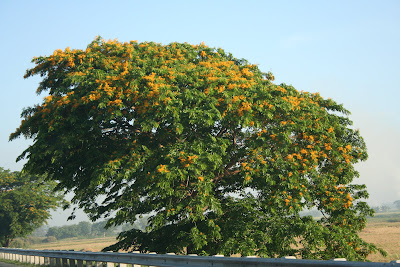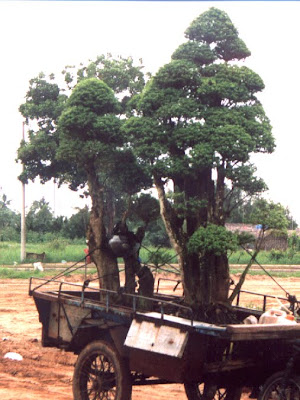 Vacation is over, go back to school
Vacation is over, go back to school
Instructor,
Paaralang Bayan sa Himpapawid (School-on-Air)
DZRB 738 KHz AM Band 8 to 9 evening Monday to Friday
1. To our beloved students in particular: Remember that good grooming encompasses holistic personality - the inside and outside of the person, so to speak, as reflected by his appearance and actions.
2. Wearing your uniform speaks of you being a teacher, student, parent, policeman, doctor, etc. When not wearing your uniform you are excused from your duties and responsibilities.
3. Revive good handwriting in school is good but not necessary anymore, because of the technological advances of computers – writing, printing, recording, publishing, audio-visuals, blogs, e-mail – why care about handwriting, it’s passe’.
4. It is cheaper and faster, and most likely better tasting, fast foods as long as they are the top in the fast food chain –
kilala, malinis, cordial pa ang service, at international pa ang pangalan. Don’t bother to prepare
baon. It’s messy – at mas expensive in the long run.
5. Children studying in exclusive religious schools are better disciplined and guaranteed to uphold values than those studying in other schools.
6. Reward and punishment is a must between parent and children, teacher and student, or similar relationships where good deeds are compensated. The most potent and effective reward is that which can be translated to material things and money, especially.
7. If you are in school, make sure that you behave so that your teacher will speak highly of you – pay attention in class and do your homework. Treat your teacher with respect. Do all these with the end in view of getting a good grade and earning a good reputation among your classmates – perhaps you will get also a medal of good conduct and behavior.
8. Schools are not generally receptive to prohibit carbonated drinks and junk foods in school because these are major source of income of canteen and concessionaires.
9. Schoolyear, welcome back to school. It’s a joy to our children. They look forward to it. To many, it’s more than all the joys of Holidays.
Kaya, pagbigyan mo naman sila. Give our children new clothes, shoes, notebooks, if possible all new –
kaya nga new schoolyear. Pamper our children once in a while.
10. Bayanihan is only a lesson but not really a practice in schools. It’s in rural areas and on the farm, other workplaces where we see Bayanihan in Action – nonetheless our students should have enough awareness of the concept.
11. Flexibility as a virtue allows us to be thrifty and to save, to avail of those locally available, our own products, above all, it is a guarantee of our freedom and right – the right to choose.
12. Growing affluence and increasing level of living standard take us farther and farther away from the basic concept of work, thus less and less young people go for the blue collar courses, and blue collar course are made into white one.
13. Where have all the brilliant young ones gone? They are in engineering, biology, chemistry, physics, medicine, law and in the PMA.
14. The corporate world swallowed up small businesses and farms, family business and cooperatives. Gone is Small is Beautiful (by Schumacher). That is why we should emphasize bigness in education.
15. Flu, in general, specially A(H1N1) or swine flu, is so contagious, mere physical nearness can transmit the contagion, that is why quarantine rules and procedures are very strict all over the world.
16. Greening Movement means protecting the environment, eating more fruits and vegetables rather than meat, practicing Ecological Intelligence like using wax paper instead of styrophore, banana leaves instead of plastic, and the like.
17. You really cannot attribute success neither to your capability as a person alone, nor Providence alone. There are simply people who tend to rely more on their own capabilities before they expect Providence to intervene. Likewise there are those who tend to believe in the Providence above anything else.
18. A person who attributes his success to the Higher Principle, the Unseen Hand, more than his own capability, his efforts, sacrifices, is an existentialist. This philosophy is called Existentialism.
19, 20, 21, 22 A lot of young people grow up in sub-cultures of brokenness, divorce, drugs, sexual temptations, etc. They may have friends, and much leisure – but they are constantly looking of some kind of fulfillment and assuring thoughts and feeling, a real sense of belonging. There are four institutions that shape the character and ensure a good future of our children, namely
___________________
___________________
___________________
___________________
22. The greatest concern parents have on their children with subjects of 25 units, and many assignments is stress. Stress can lead to more serious consequences if not arrested early enough.
23. Our children are exposed to many diseases this rainy season like typhoid, diarrhea, leptospirosis, dengue and flu. Sanitation and cleanliness are the most practical means of disease control management, which must begin at home.
24. Manila, because of the Marikina Fault line, and the alluvial ground, and rising sea water, has been ranked lately as No 7 earthquake prone city in the world. That’s why we have to take emergency drills seriously, specially in school.
25. Fatalism is in Pilipino _______________.
ANSWERS: 1t, 2f, 3f, 4f, 5f, 6f, 7f, 8f, 9f, 10f, 11t, 12t, 13f (They are in computer science, healthcare and courses of the least resistance.) 14f (Small businesses have taken the reverse advantage, specially in the present economic crisis.) 15t, 16t, 17t, 18t, 19 to 22 (In any order: home/family, school, church, community) 23t, 24t, 25
Bahala naOutstanding 23-25
Very Good 19-22
Good 15-18
Fair 11- 14
Failed 10 and below - Listen regularly to
Paaralan Bayan sa Himpapawid








.jpg)




.jpg)
.jpg)














.jpg)





































